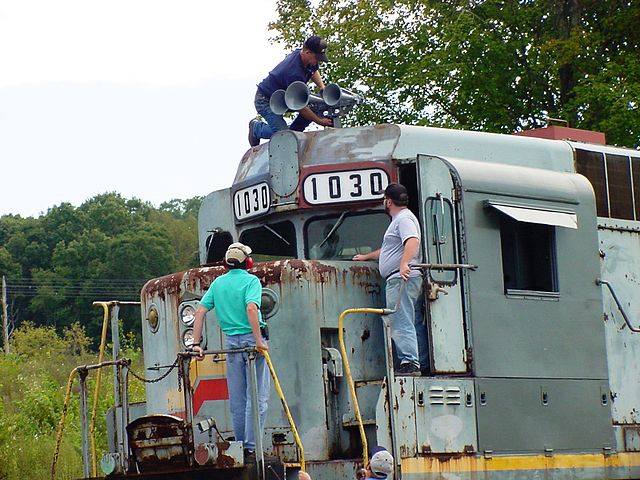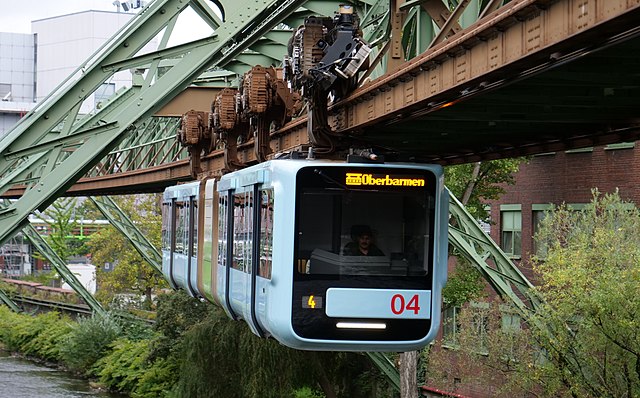A train horn is an air horn used as an audible warning device on diesel and electric-powered trains. Its primary purpose is to alert persons and animals to an oncoming train, especially when approaching a level crossing. They are often extremely loud, allowing them to be heard from great distances. They are also used for acknowledging signals given by railroad employees, such as during switching operations. For steam locomotives, the equivalent device is a train whistle.
Leslie S-5T train horn being fitted to a restored ex-Seaboard System EMD GP30 diesel locomotive at the 2006 Oak Ridge Horn Honk and Collectors Meet
Train horns are made of multiple horn units called chimes which produce different notes; sounded together they make a chord. The Nathan model M5 pictured is a 5 chime horn.
Leslie RS3L locomotive horn, once the most common horn in use on North American railroads
Diagram of a typical locomotive air horn power chamber, showing operation
A train is a series of connected vehicles that run along a railway track and transport people or freight. Trains are typically pulled or pushed by locomotives or railcars, though some are self-propelled, such as multiple units. Passengers and cargo are carried in railroad cars, also known as wagons. Trains are designed to a certain gauge, or distance between rails. Most trains operate on steel tracks with steel wheels, the low friction of which makes them more efficient than other forms of transport.
An electric locomotive pulling a passenger train in Russia
A rack railway in Switzerland
Diesel locomotives pulling a freight train in New Zealand
A suspended monorail in Germany








